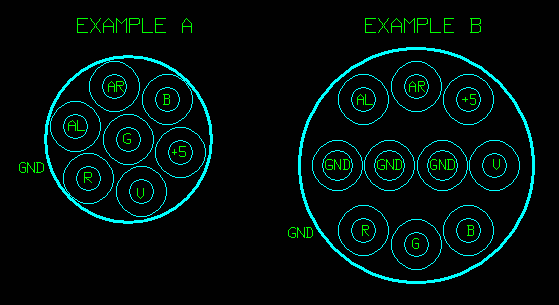FBX wrote:I just did a video capture recording of my SNES using the RGB upgraded cable offered by Retro_Console_Accessories, and then a 2nd video capture using the official S-Video cables from Nintendo. Not only was there ZERO loss of channel separation on the RGB upgraded cable,
TL;DR: Your recordings actually prove RGB32E's statements RE: crosstalk correct...and also aren't good examples of channel separation loss.
Long version -
Regardless of technical side of the argument, I am not certain that one can conclude that there is zero loss of channel separation using these scenes from LttP as a demo as the sounds are most likely not designed to be 100% isolated in the first place. It would probably be best to use something like a SNES Test cart (if it offers isolated sound tests) or some other cart that will do something along those lines in order to check for stereo crosstalk.
I say that because you can definitely hear the sword in the opposite side channel from the side of the screen from which it was used. If those sounds were supposed to be 100% isolated (which really isn't good sound mixing, imho), then there should not be any sound of a sword in the opposite channel. You could argue that Link can't technically stand 100% left or right on the screen, but I digress...
Rather than compare the Nintendo S-Video cable's audio to the RetroConAccess cable's audio using Link to the Past, the best demo would probably be to compare (if you are doing it by human ear alone - which you could argue is the only relevant thing) using the following:
1: A game or program that allows you to pan 100% and/or test only a single channel
2: Record the analog audio output using said test
3: Record the digital audio output using said test (for reference purposes - could be audio has "issues" before the DAC...however unlikely <shrug>)
It is quite possible that the analog output of the SNES has issues somewhere along the path from the DAC to the multiout - in which case the external cables used in the equation are irrelevant.
but it actually outperformed the Official S-Video cable in terms of video cross-talk shielding on those audio channels.
It shouldn't be a matter of one being better than the other. There shouldn't be any video noise in the audio. There is noise present in the audio of both recordings, and that is enough to argue that shooting for something better is worth attempting.
Also note that if what RGB32E said about the construction method of the pro cables is true and the audio L/R from the SNES is transported in twisted pair...that is actually improper design for unbalanced audio (at least from what I have read in the past).
I went the digital route with SNES, so I personally can't offer any of my custom cable work of analog audio cables for SNES as an example by providing a recording. Again, it is possible that there are issues with the audio prior to the cable inside the SNES.


